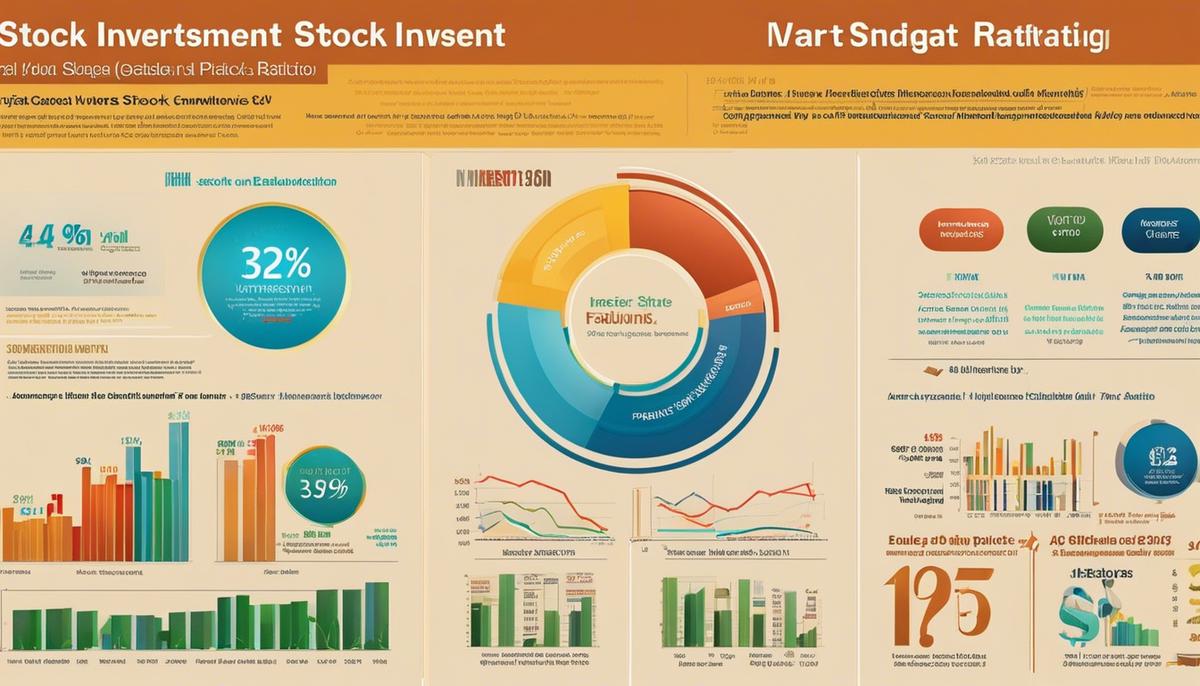Investing in the stock market is a journey that has the potential to create immense wealth, but with this opportunity comes a degree of risk. An understanding of the basic principles of stock investment is, therefore, vital for anyone who wishes to navigate this exciting yet unpredictable financial landscape. This guide aims to provide a comprehensive overview of everything you need to know – from the fundamental aspects of stocks to the more advanced investment strategies. A well-informed investor is one who is equipped with the knowledge of market trends, recognizing profitable stocks, the art of diversification, risk management, and exit strategies. Once armed with these skills and insights, you’ll be better prepared to craft an investment strategy that aligns with your financial objectives and risk tolerance.
Understanding the Basics of Stock Investment
Sweeping across the landscape of entrepreneurship and moving your chess pieces strategically in the diverse business sectors often leads us to bank on the intricate game of stock investment.
It’s like venturing into the vast blue ocean where underlying currents of knowledge and a compass of core principles guide your decisions towards profitable shores.
As we tap into this wellspring of wealth creation, let us delve into the unalterable cardinal principles of investment that fortify your game plan, and hallmarks stock market success.
To kick off, understanding the distinct difference between trading and investing tends to be considered trivial, yet it forms a cornerstone of investment wisdom.
Investing represents a long term commitment, drawing upon the strategies of compounding and dividend reinvestment.
Meanwhile, trading hinges on shorter term market tendencies, leveraging fluctuating stock prices for quick wins.
Hence, identifying your investor identity shapes the foundation of your investment venture.
Next up is the quintessential principle of diversification.
Spreading your investment across a broad portfolio of varied corporate sectors, asset classes, and geographical locations aid in mitigating risks and catering to the market volatility.
With the right mix of aggressive and defensive stocks, diversification indeed offers resilience and flexibility amidst the unpredictable market winds.
The paramount principle that rules the roost of stock investment is to always invest in businesses that you comprehend thoroughly.
Renowned investment gurus would ardently emphasize the grasp of intricate business models, industry trends, and the company’s competitive positioning to seize the real potential.
After all, a profound understanding fuels informed decisions, which in turn steer investment towards the safe shores of lucrative returns.
Crucial to your investment prowess is the ability to decipher the financial health of a company through its financial statements.
The balance sheets, income statements, and cash flow statements showcase a business’s financial resilience, profit-making ability, and overall health.
The stronger the fiscal fitness, the healthier the returns promise to be.
Tied to your fiscal acumen is theStock skills to evaluate management effectiveness.
Sound judgement is invaluable in investment, and the ability to critically evaluate the management of your portfolio companies based on performance reports, strategies, and decision-making effectiveness stands as vital to smart investing.
Investing should certainly not be driven by market sentiments, rather value should be the paramount factor, dictating where capital should be placed.
Fear and greed driven decisions have historically led to economic disasters.
Hence, prudent investors stay the course, with conviction hinged on intrinsic value than temporary market fluctuations.
Finally, it all boils down to the timeless idiom – patience is indeed a virtue.
Stock investing isn’t a sprint to immediate wealth; instead, it’s a marathon that cultivates wealth over extended periods.
Steady persistence and coherent investment strategy win the long race over reckless exuberance and short-term thinking.
With these essential principles in your investment toolbox, it’s time for you to step into the exciting world of stock market, liaising with the unknown, harnessing your knowledge and strategizing effectively to navigate the route.
Like a seasoned surfer dancing with the ocean’s waves, the journey promises to be complex, challenging, but ultimately, incredibly rewarding.

Identifying Investment Goals
Stemming from a wide understanding of investments and business operations across various industries, it’s evident that investment goals play a key role in shaping your investment strategy. If your investment decisions do not align with your goals, the chances of realizing potential wealth diminish significantly. Let’s delve deeper into how investment goals relate to strategy.
Analyze Time Horizon and Risk Tolerance
Setting clear goals for your investments should be congruent with your financial time horizon and risk tolerance. For instance, one should lean towards a more aggressive approach if there’s a long investment period and a high tolerance for risk. Conversely, if the time horizon is shorter, proceeding with a cautious approach and gravitating towards low-risk investments is suggested. The connection between these aspects strongly underscores how goals shape your overall investment plan.
Adjust Investment Portfolios
Investment goals hold the power on influencing the adjustment of your investment portfolio. Think of these goals as a compass leading your investment strategy. Should the market conditions change or should there be alterations in the risk-return landscape, an investor may have to recalibrate their portfolio to keep it aligned with their goals. If, for instance, an investor has a wealth accumulation goal for retirement, they might tweak their portfolio to incorporate more growth-oriented stocks.
Formulate Exit Strategies
Equally as vital, yet often overlooked, is that investment goals influence the creation of a sound exit strategy. By having a clearly defined endgame for each investment, it becomes easier to understand when to sell or hold. For instance, if the goal was capital appreciation and the asset has denoted significant growth, an exit strategy helps in making the decision to sell. Goals, therefore, grant an exit route when market conditions become unfavorable thus safeguarding investments.
Asset Allocation Decisions
Making strategic asset allocation decisions is further dictated by the set goals of the investor. While risk-tolerance and time horizon weigh in on this decision, the desire for growth, income, or preservation of capital also forms the basis on where one should invest. A young investor aiming for growth, for instance, might opt for a portfolio heavily skewed towards equities, rebalancing over time as goals shift.
Goal-Based Benchmarks
More so, investment goals can shape your investment strategies by setting goal-based benchmarks. This involves comparing the performance of your investments with a representative benchmark that closely mimics your investment profile and goals. Thus, the tendency to outperform the chosen index becomes a goal in itself, directing future actions and decisions.
The bottom line? Investment goals have an overarching influence on the strategies that one chooses. From asset allocation to exit strategies, having clear investment goals charts the path, providing guidance and making room for better financial decisions. So, step back, review your goals, tweak your strategy accordingly, and march towards a portfolio that best serves your needs. Remember, your goals should be steering your strategy, not vice versa.

Analyzing Market Trends
Title: Informed Investments: The Power of Updated Market Analysis
Navigating the financial terrain requires a deep understanding of the current market situation. Engaging in continuous market analysis is like having an updated road map for investment decisions.
Market analysis presents a real-time snapshot of consumer behavior, market trends, and the competitive environment. By studying these variables, investors can confidently predict how markets will move and strategize accordingly.
For instance, an updated market trend analysis might reveal a shift towards sustainable living. This insight provides a valuable tipoff for investors considering sectors like renewable energy, organic food industry, or electric vehicles. Armed with this vital information, they can divert their funds to industries likely to experience an upsurge.
However, market analysis is not limited to identifying opportunities. It also shines light on potential risks. Prowling threats such as a rise in inflation rates, political uncertainty, or looming technological disruptions can significantly impact investment returns. By keeping an eye on these factors, investors can preemptively minimize losses.
Another critical factor to tap into through market analysis is competition. The investing landscape is highly competitive. Decoding competitors’ strengths, weaknesses, and strategies through market analysis provide investors with a tactical advantage enabling them to outperform others in the same space.
More than just driving investment decisions, updated market analysis plays a pivotal role in portfolio rebalancing. Considering market volatility is inherent, regular market analysis will advise when it’s time to adjust allocation to different assets within a portfolio. This practice is fundamental to mitigating risk and enhancing returns.
Leveraging on updated market analysis also aids investors to strategize their exit. A well-planned exit strategy is a key to realizing the maximum possible returns on an investment. Market analysis offers cues on when to sell off and when to stay put, based on market dynamics, industry shifts, and economic conditions.
In the realm of investing, it is paramount to understand one size does not fit all. Every investor comes with a unique set of financial goals and risk appetite. By employing market analysis, investors can set individualized, goal-based benchmarks. Pairing the investment strategy with personal financial goals and risk tolerance level will not only optimize the returns but also provide more investment satisfaction and peace of mind.
Immerse yourself in updated market analysis and harness its power to inform your investment decisions. Keep an ear to the ground and one step ahead in this ever-changing business landscape. Stay current, stay informed, and watch your investments thrive. Who knows, the next market shift might just usher in a deluge of returns on your investment.

Selecting Profitable Stocks
When selecting high-yield stocks, there are several key indicators one must take into account. Beyond the basics of understanding your investment and being patient, these indicators provide a more sophisticated and, ideally, more profitable approach to investing in high-yield stocks.
Firstly, investors must consider Return on Equity (ROE). ROE is a measurement of a company’s ability to generate profits from its equity. In simple terms, it’s an indicator of how well a company leverages its assets to generate earnings. A high ROE is generally a strong indication of a profitable, well-run company.
Next, consider the dividend payout ratio. This ratio indicates the proportion of earnings a company pays its shareholders in dividends. A sustainable payout ratio — one that is neither too high nor too low — could be a strong indicator of a high-yield stock. However, a word of caution: some companies may push up their payout ratios to attract investors, even when their earnings can’t support it. Bigger isn’t always better.
Another crucial indicator is earnings growth. Generally, companies that demonstrate steady earnings growth over the long term are considered safer investments. Strong earnings growth usually translates to expanding operations, increased market share, and improved competitiveness. Investors may enjoy both capital gains as well as dividends, making these stocks potentially high yield.
Further, consider debt to equity ratio (D/E). This metric compares a company’s total debt to its total equity. A lower D/E ratio could indicate a company is using less leverage and has a stronger equity position. Investing in overleveraged companies could be risky, particularly in volatile market conditions.
The current ratio is another important indicator. It’s a measure of a company’s ability to cover its short-term liabilities with its short-term assets. A ratio over 1 indicates that the company can pay off its obligations if they came due at that point.
Finally, price-to-earnings ratio (P/E), while traditionally used to determine if a stock is over- or undervalued, can also be a good indicator for potential high-yield stocks. While a lower P/E ratio could indicate a good value, investors must also consider the company’s growth prospects.
Uncover insights into predatory practices to develop a sturdy defense against them. Certain companies could artificially inflate dividends or pump up their stock only to cause investor losses. Stay vigilant.
Remember, though, in the final reckoning, your investment decisions should align with your personal financial goals and risk tolerance. Navigating the high-yield stock landscape does demand a measure of savviness and an appetite for risk. But armed with these key indicators and a solid understanding of the enterprise behind the stock, you’re well-equipped to make informed decisions in pursuit of high-yield returns. In the end, diligence, understanding, and a degree of calculated spontaneity are the axes around which successful, lucrative investments revolve.

Portfolio Diversification
Plug into Global Markets for Optimum Diversification
Expanding on the concept of diversification and the importance of understanding businesses, let us chart new waters. The central theme of a holistic investment strategy is grappling not just with familiar territory, but adopting a broader, global perspective. Savvy investors distribute their assets among various sectors, but also across different geographical regions. This tactic helps mitigate risk related to economic downturns in specific countries and exploit potentially high-growth markets abroad.
Various global markets provide an assortment of opportunities from emerging technology powerhouses in Asia to revolutionary renewable energy initiatives in Scandinavia. These international investments throw open the doors to diversifying into industries that might be nascent in the investor’s home country. Asset allocation should reflect a genuine global mix, aligning with unique financial models and market dynamics seen in these diverse markets.
Implement Superior Risk Management With Alternative Investments
Jumping beyond stocks, bonds, and cash, a well-diversified portfolio also possesses a fraction dedicated to alternative investments. Real estate, commodities, hedge funds, private equity, or even art and wine can be included in this umbrella. While these may be trickier to navigate, their potential for high returns combined with lower correlation to traditional asset classes makes them worthwhile.
Alternative investments act as a buffer, providing an extra layer of security against fluctuations in conventional markets. They can contribute to a more resilient portfolio that withstands volatile periods and delivers the added punch of potentially lucrative returns.
Invest Prolifically In Knowledge
Lastly, to excel in the art of diversifying, one must be an omnipresent learner, staying abreast of latest trends. New industries are frequently born out of technological leaps, ready to be capitalized upon. Whether it’s advancements in the field of Artificial Intelligence, Virtual Reality, biotechnology, or FinTech, an investor’s ability to adapt and invest early can create a significant edge.
No investment is foolproof, and even the most diversified portfolio can face periods of struggle. What helps in these times is the adaptability and resilience of the investors themselves – their ability to absorb, learn, and adapt.
In conclusion, rewriting the rules of diversification involves not only an understanding of different industries and markets but also a commitment to continuous learning and adaptability. The real world of investing is complex and constantly changing – it’s the innovative, flexible, and knowledgeable investor who reaps the rewards in the long run.

Risk Management and Exit Strategies
The next crucial phase in an investor’s journey is tapping into the promise of global markets. The globe is teeming with a multitude of investment opportunities that can cater to every kind of investor, whether conservative or risk taker.
For the savvy investor, attaining knowledge of international investment opportunities and trends is paramount. Doing so lends a more comprehensive perspective to the investment strategy, providing a broader variety of options to choose from. There are the pillars of the global economy, such as the US and China, and emerging markets, like India and Brazil, that offer potentially high rewards albeit with higher risks. An investor shouldn’t shy away from the potential these markets offer.
Geographical diversification is an integral part of risk management too. By spreading investments across different markets, one can offset losses in one region with gains in another. This kind of diversification can serve as a shield against regional volatility, financial crises, and local economic risks that might impact the value of your investment.
However, global investing also poses unique considerations. Language barriers, diverse business cultures, and a wide range of financial regulations can pose challenges to investing abroad. Furthermore, each market comes with its unique financial models and market dynamics that intensify complexity. Nevertheless, perceived complexity should not deter investors. With due diligence, the potential of global markets can be harnessed effectively.
Pioneering investors also know the value of venturing into alternative investments for robust risk management. These include assets like commodities, real estate, hedge funds, and private equity. The charm of alternative investments lies in their low correlation with traditional investments such as stocks and bonds. Due to this uncorrelated nature, they offer an extra layer of protection during market downturns.
Yet, as with all investments, they come with their unique set of challenges. The lack of liquidity, complex nature, higher minimum investment requirements, and fee structures can deter novice investors. However, their ability to provide a hedge against inflation and market volatility makes them a worthy consideration.
In the ever-evolving scope of investment, the importance of continuously updating knowledge and adapting to the shifting trends cannot be stressed enough. Investors who remain agile and resilient, ready to adapt their investment strategy with the changing times, are the ones poised to succeed.
Investing with this dynamic, global perspective wouldn’t mean just rewriting the rules of diversification. It embodies the essence of investment itself, wherein one learns, adapts, and grows, not just as an investor, but as a strategic thinker who understands the complexities of the worldwide economy.
In conclusion, investing isn’t merely about putting money in a venture. It’s about knowledge, strategic planning, and adaptability. By understanding businesses, exploring global and alternative markets, and staying nimble in the face of change, investors can mitigate risks, formulate effective exit strategies, and ultimately, harness the power of their investments to create lasting wealth.

Armed with a deep understanding of these key aspects of stock investment, you should be better prepared to venture into the world of investing and carve a path towards your financial goals. Alongside knowledge, patience and resilience are two invaluable virtues in this venture. Remember, while the stock market might appear a convoluted maze at a glance, with study and experience, you’ll find it’s a path that can lead to financial growth and a secure future. With these tools in your investment toolbox, you can step forward with the confidence to make informed decisions, manage your risks wisely, and most importantly, stay committed to your investment goals even amidst the market volatility.



